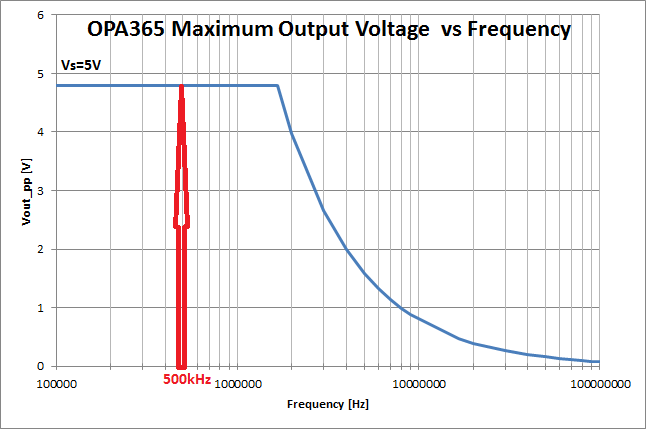I would like to confirm Maximum Output Voltage vs Frequency for OPA365.
The customer will use it for 500kHz signal input. And the output will be full scale for the specification (about 4.8V output).
So, they want the figure for Maximum Output Voltage vs Frequency like the figure I attached.
Could you please give it for OPA365? If you can not, could you please give the substitution?
Best regards,
Atsushi Yamauchi





